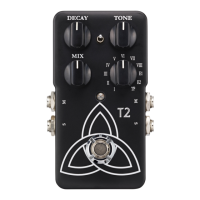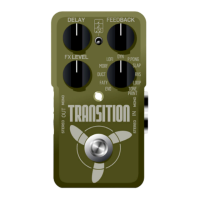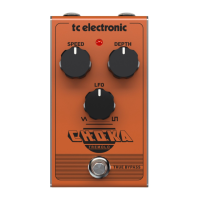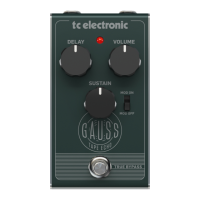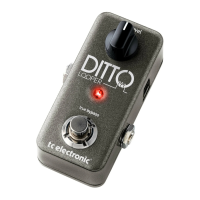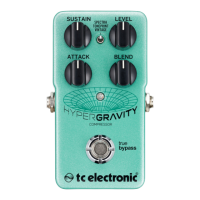--- that is, we hear a sound source as coming from the position from where the sound
source has its shortest distance, or “arrives first” ---
By introducing delays in a stereo system we can move our experience of the position
of the sound sources. In some respects these delays needed, are so short, that we
merely regard them as phase shifts. This is one of the basics of most so called
EXITER-effects, in which a slight and static broadening of the stereo image is
created (primarily in the treble range).
The careful combinations of phase shifts and delays within the TC 1210, enables a
variety of STATIC SPATIAL EXPANSIONS, wide broadenings and psychoacoustic
enhancements of the stereo image to be created.
By unbalancing the delays and phase shifts within the TC 1210 it is possible, with the
left and right channels volumes remaining unchanged, to shift the appeared
origination of the sound from left to right and vice versa. Modulating the delays
introduces a dynamic shifting panning image. These effects can be heard with the
TC 1210 “STATIC and DYNAMIC DELAY PANNING” effect setting samples.
The basics of a chorus-sound is the mixing of a signal with a modulated, delayed
part of the same signal.
The modulation of the delay brings with it a slight shifting pitch, the added delay part
of the signal gives the imagination that more than one voice is sounding - hence the
name “chorus”. Furthermore the mixing of the two parts produces a “comb-filter”-like
frequency response.
Arranged in the right proportions this brings with it a nice broadening of the sound. -
TC 1210 contains not only one, but two such units.
Two chorus/flanger units brings the possibilities of creating chorus and flangings
simultaneously as well as creating some even more exiting chorus effects, some of
them with the nice features of the single chorus unit enhanced, some of them with a
totally new stereo image.
Combined with the spatial image creation circuitry within the TC 1210, you create a
variety of dynamically moving SPATIAL CHORUS and FLANGER images. Spatial
excitations bound to be heard to image.
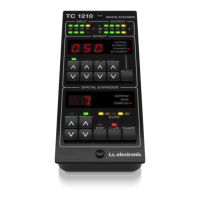
